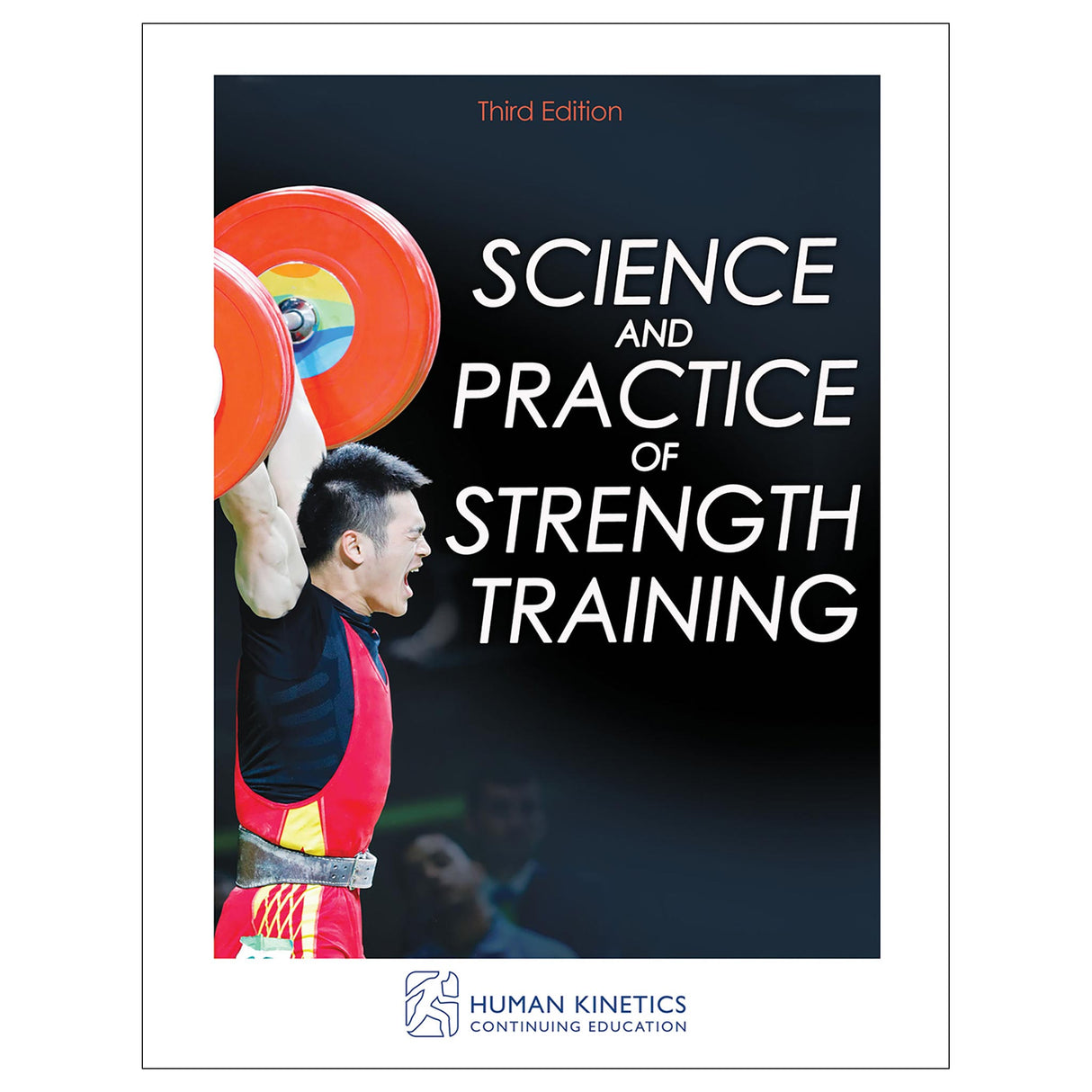Science and Practice of Strength Training 3rd Edition Online CE Exam With Print Book
Author: Human Kinetics
$180.95 CAD
Human Kinetics strongly recommends that you complete your exam within the calendar year of your date of purchase to ensure approved credits do not expire for your organization.
- Science and Practice of Strength Training, Third Edition, book
- Online continuing education exam
The expert authors have trained more than 1,000 elite athletes, including Olympic medal winners, world champions, and national record holders. Influenced by both Eastern European and North American perspectives, their experience and expertise are integrated into solid principles, practical insights, and directions based on current scientific findings. They provide examples of strength training programs to demonstrate the principles and concepts explained in the book.
The book is divided into three parts. Part I focuses on the basis of strength training, detailing basic concepts, task-specific strength, and athlete-specific strength. Part II covers methods of strength training, delving into velocity training, training intensity, timing, exercises used for strength training, injury prevention, overtraining, athlete monitoring, and goal-specific strength training. Part III offers even more practical applications, exploring training for specific populations, including women, young athletes, and senior athletes. Throughout the book, you’ll find suggested readings that can further aid you in developing strength training programs.
After reading the book, certified professionals can take the companion CE exam to earn continuing education credits.
Learning Objectives
- Identify the principles of activity and training effects that affect the adaptations to a strength training plan.
- Recognize the effects of motor task parameters and the athlete’s abilities on the manifestation of strength.
- Determine the peripheral and central factors that affect the maximal forces produced by an athlete.
- Analyze the effects of various training intensities to determine the strength training method for a particular desired result.
- Identify the effect of the timing of training on the result of an athlete’s preparation.
- Evaluate strength training exercises for their contribution to the outcome of a training plan.
- Explain the influence of velocity on the activities in the weight room.
- Understand how strength training loads affect the body in order to prevent injury, especially injuries to the lumbar spine region.
- Distinguish between overreaching, overtraining, and overtraining syndrome.
- Analyze the effects of several variables on the body’s ability to adequately recover and improve performance.
- Illustrate an effective assessment program in the weight room to measure the outcomes of the prescribed training program.
- Recognize the role of goal setting in the program design and implementation process.
- Identify the factors in physical development and injury prevention specifically related to a strength training program for women.
- Apply proper design principles and implementation to provide a safe and effective strength training program for young athletes.
- Illustrate the potential benefits of a properly designed progressive resistance training program for senior athletes.
Audience
Certified personal trainers, strength and conditioning coaches, and athletic trainers.Chapter 1. Basic Concepts of Training Theory
Adaptation as a Main Law of Training
Generalized Theories of Training
Training Effects
Summary
Chapter 2. Task-Specific Strength
Elements of Strength
Determining Factors: Comparison Across Tasks
Summary
Chapter 3. Athlete-Specific Strength
Muscle Force Potential (Peripheral) Factors
Neural (Central) Factors
Taxonomy of Strength
Summary
Part II. Concepts of Strength Training
Chapter 4. Training Intensity
Measurement Techniques
Exercising With Different Resistance
Training Intensity of Elite Athletes
Optimal Training Intensities From Comparative Research
Methods of Strength Training
Summary
Chapter 5. Timing in Strength Training
Structural Units of Training
Short-Term Planning
Medium-Term Planning (Periodization)
Periodized Programming Models
Summary
Chapter 6. Exercises Used for Strength Training
Classification
Exercise Selection for Beginning Athletes
Exercise Selection for Qualified Athletes
Additional Types of Exercises Used for Strength Training
Experimental Methods of Strength Training
Breathing During Strength Training
Summary
Chapter 7. Velocity in the Weight Room
How to Measure Velocity
Considerations When Testing
Measuring High-Velocity Lifts in the Weight Room
Slow-Velocity Concentric Resistance Exercise
Slow-Velocity Eccentric Resistance Exercise
Velocity-Related Assessments in the Weight Room
Training Method Variations and Weight Room Velocity
Using Lifting Velocity to Determine Training Load and Volume
Summary
Chapter 8. Injury Prevention
Factors Contributing to Increased Injury Risks in the Weight Room
Training Rules to Avoid Injury
Lower Back Pain and Injury
Biomechanical Properties of Intervertebral Discs
Mechanical Load Affecting the Intervertebral Discs
Injury Prevention to the Lumbar Region
Summary
Chapter 9. Overreaching, Overtraining, and Recovery
Training Monotony and Variation
Types of Resistance Exercise
Psychology of Resistance Exercise Overtraining
Speed Is Very Sensitive
Lifting Power Decrements
Vertical Jump
Rate of Force Development
Strength Decrements
So Which Performance Tests?
Physiology of Resistance Exercise Overtraining
Sequence of Performance Impairments
Summary
Chapter 10. Monitoring Athletes in the Weight Room
Purpose of Testing
Who Is the Tester?
What Is Monitored?
Practical Considerations Related to Assessment
Monitoring Tests
Analyzing and Reporting Results
Summary
Chapter 11. Goal-Specific Strength Training
Developing a Profile of Target Goals
Evidence-Based Practice
Testing and Monitoring Progress
Strength Performance
Power Performance
Muscle Mass
Endurance Performance
Injury Prevention
Summary
Part III. Strength Training for Specific Populations
Chapter 12. Strength Training for Women
Coaching Style Is Important
The Need for Strength Training for Women in Sports
Benefits and Myths of Strength Training for Women
Trainable Characteristics of Muscle
Development of Lean Tissue Mass
Physiological Contrasts Between Women and Men
Strength Training Guidelines for Women Athletes
Incidence of Injury
Menstrual Cycle and Strength Training
The Female Athlete Triad
Summary
Chapter 13. Strength Training for Young Athletes
Safety and Strength Training for Young Athletes
Types of Musculoskeletal Injuries
Primary Factors in Avoiding Injury
When to Start
Benefits of Strength Training for Young Athletes
Myths of Strength Training for Children
Strength Training Guidelines for Young Athletes
Long-Term Athletic Development
Summary
Chapter 14. Strength Training for Senior Athletes
Age and Its Effects on Strength and Power
Training for Strength Gains
Training for Muscular Power
Nutrition, Aging, and Exercise Challenges
Recovery From Resistance Exercise
Strength Training and Bone Health
Strength Training Guidelines for Senior Athletes
Summary





